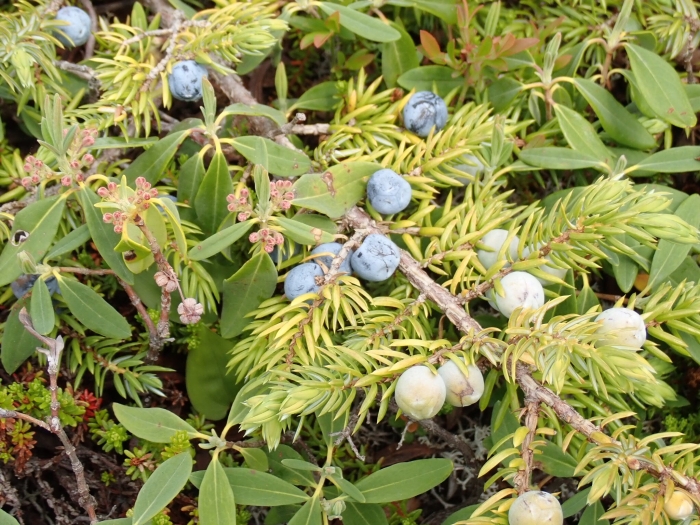Dwarf Juniper
(Juniperus communis subsp. nana)
Dwarf Juniper (Juniperus communis subsp. nana)
/
/

John Brew
CC BY 4.0


































Estimated Native Range
Summary
Dwarf Juniper is valued for its hardiness and adaptability, making it a popular choice for rock gardens, ground covers, and as a low hedge in landscape design. It is also appreciated for its aromatic foliage and its ability to thrive in poor soils. In cultivation, it requires well-drained soil and can tolerate a range of conditions from full sun to partial shade. While generally low-maintenance, it can be susceptible to fungal diseases if grown in overly moist conditions. Dwarf Juniper is also known for its resistance to deer browsing, adding to its appeal for gardeners dealing with wildlife pressure.CC BY-SA 4.0
Plant Description
- Plant Type: Shrub
- Height: 6-3 feet
- Width: 3-3.3 feet
- Growth Rate: Slow
- Flower Color: N/A
- Flowering Season: Non-Flowering
- Leaf Retention: Evergreen
Growth Requirements
- Sun: Full Sun
- Water: Medium
- Drainage: Slow, Medium, Fast
Common Uses
Bird Garden, Deer Resistant, Drought Tolerant, Fragrant, Hummingbird Garden, Low Maintenance, Rabbit Resistant
Natural Habitat
native to a variety of habitats including boreal forests, mountainous regions, and heathlands across the Northern Hemisphere
Other Names
Common Names: Mountain Juniper, Rocky Juniper, Zwergwacholder, Lapinkataja, Genévrier Des Alpes, Genévrier Des Montagnes, Genévrier Nain, Ginepro Nano, Fjelleiner, Fjäll-En
Scientific Names: , Juniperus communis var. montana, Juniperus nana, Juniperus sibirica, Juniperus communis var. jackii, Juniperus communis var. saxatilis, Juniperus communis subsp. nana, Juniperus communis subsp. alpina, Juniperus communis var. alpina, Juniperus communis subsp. saxatilis
GBIF Accepted Name: Juniperus communis var. saxatilis Pall.